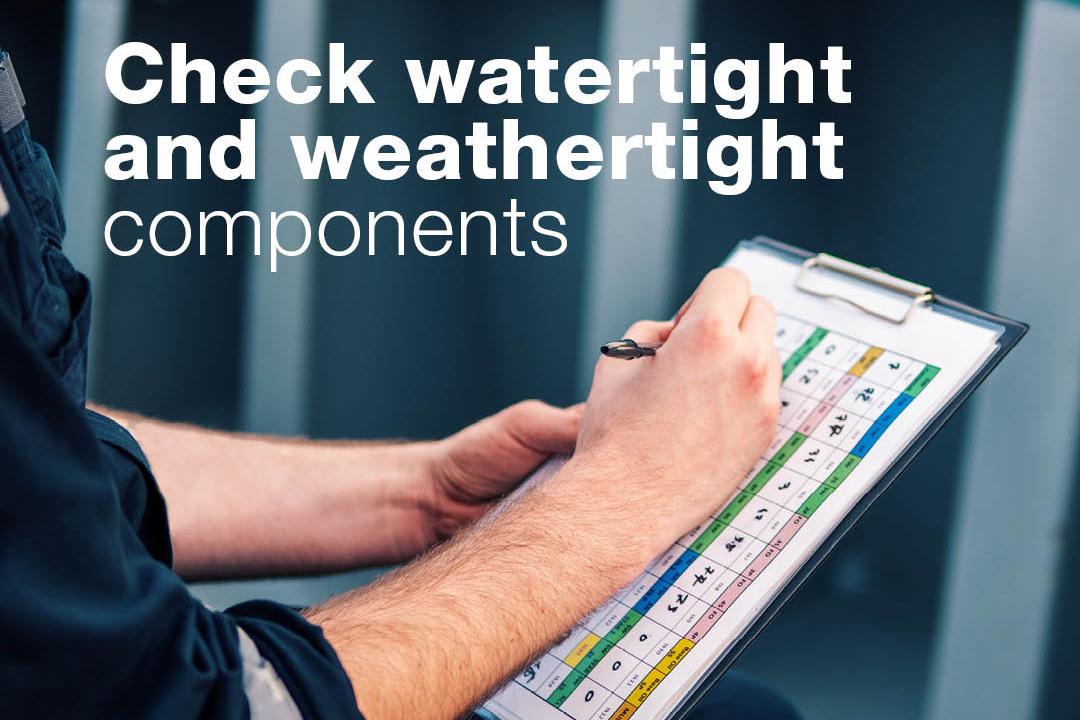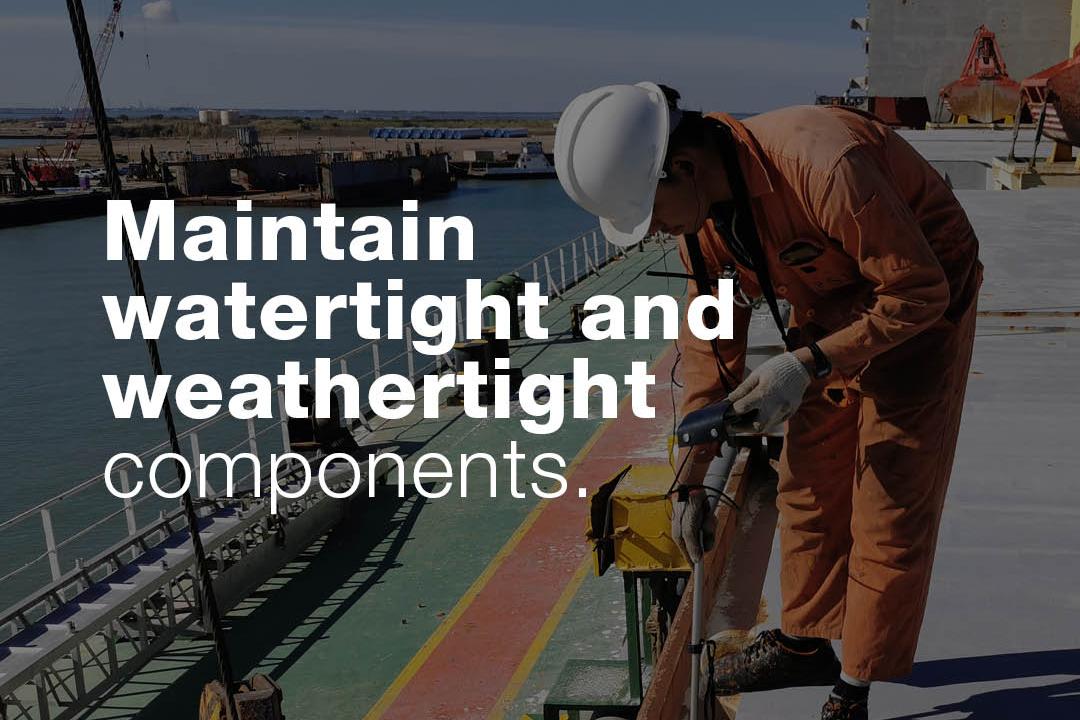Routine checks
Operators and masters should ensure their crew can conduct routine checks and repairs safely, by providing:
- adequate instructions, particularly those supplied by the manufacturer; and
- sufficient resources and time.
Crew should be familiarised with:
- water and weathertight components and their operations; and
- associated safety precautions.
For example, those involved with hatch cover operation and maintenance should be provided with
hatch cover-specific training. This will help to ensure crew are sufficiently familiarised to carry out
proper repairs and maintenance.
Before leaving port, crew should inspect doors, vents, hatch covers, gaskets, securing devices, and other openings that allows the ingress of water. The crew should:
- inspect items according to manufacturers’ instructions; and
- focus on the condition, levels of corrosion, cracks, and missing parts / failures in components.
Why check?
Find it, fix it, and keep your ship watertight.
Watertight and weathertight components are exposed to wear and tear over time. Routine checks will help to pick up maintenance issues before they become a problem.
Risk Focus: Hatch Covers (ukpandi.com)
Looks at hatch covers, their operation and tightness, as well as industry requirements.

Planned maintenance
To ensure an effective maintenance program, ship operators should assess associated risks and consider the following:
- the maintenance recommendations and specifications of the equipment manufacturer;
- the history of the equipment, including failures, defects and damage, and the corresponding remedial action(s);
- the results of third-party inspections;
- the age of the ship;
- identified critical equipment or systems; and
- the consequences of the failure of the equipment on the safe operation of the ship.
Ship operators should ensure that:
- maintenance instructions of watertight and weathertight components are included in the ship’s maintenance program, including records of maintenance, tests and repairs;
- watertight and weathertight components are not corroded;
- gaskets are periodically replaced;
- movable parts are kept properly lubricated; and
- fittings are periodically overhauled.
AMSA expects that the ship operators will have consulted with the equipment manufacturers, classification society, and flag State in preparing appropriate measures to ensure the continued safe operation of equipment and ship.
Why planned maintenance?
Avoid sunk costs: keep your ship watertight
Maintenance of the ship and equipment is a requirement of the International Safety Management (ISM) Code (Clause 10.1).
Ship inspection data shows that watertight and weathertight integrity remains a persistent and concerning issue for ships in Australian ports, making up 9% of detainable deficiencies in 2021.
Regular maintenance reduces the risk of equipment failure and ensures that the components and equipment continue to perform their intended function. It is also much cheaper than stopping a ship for replacement or repair.
- Gard (2004) Tightness of Hatch Covers looks at the tightness of hatch covers, including common issues, tests, and repairs
- AMSA’s Maritime Safety Awareness Bulletin on Planned Maintenance
